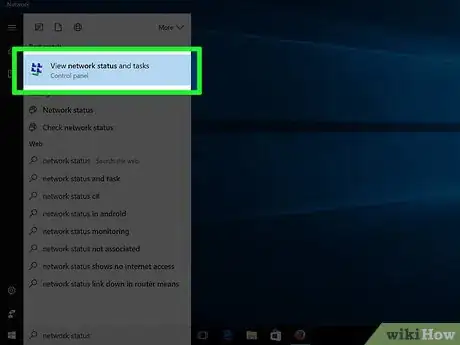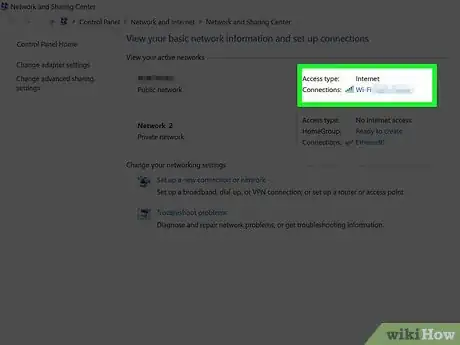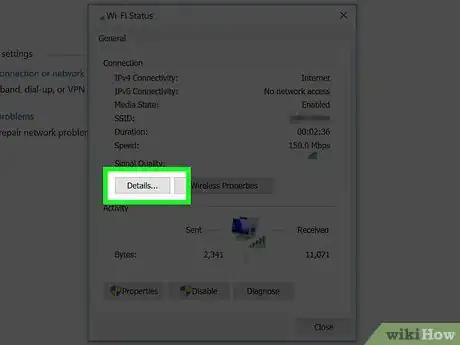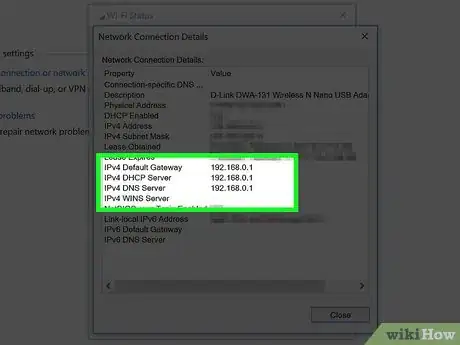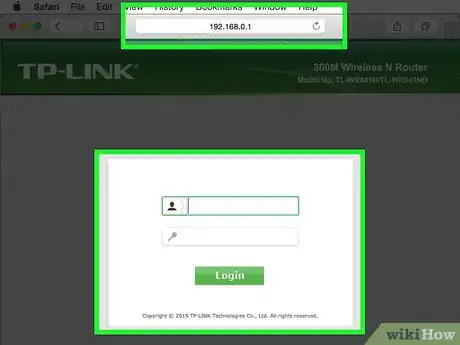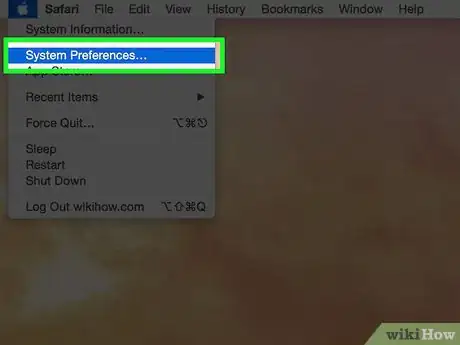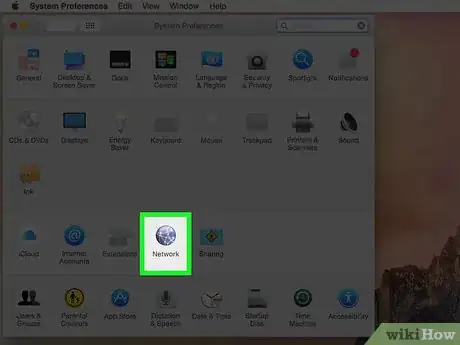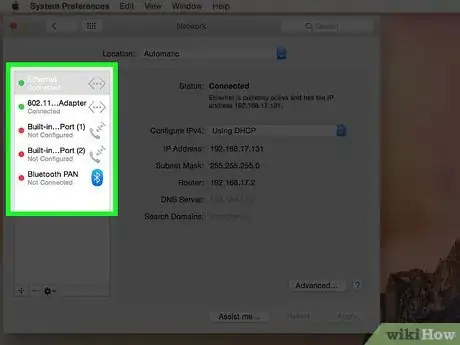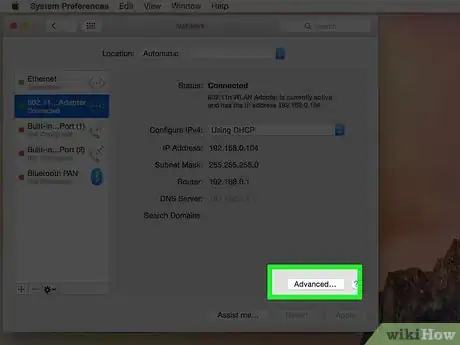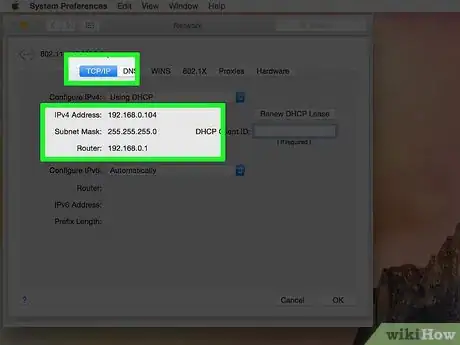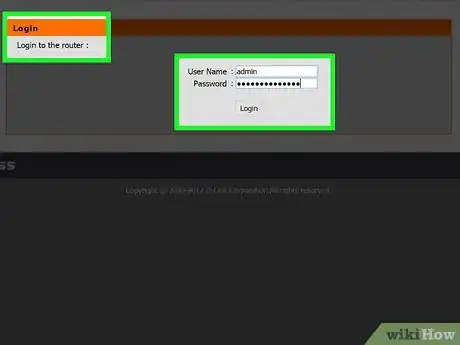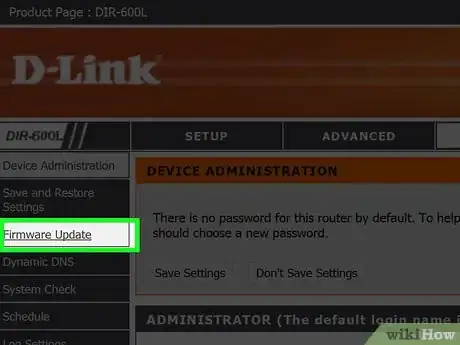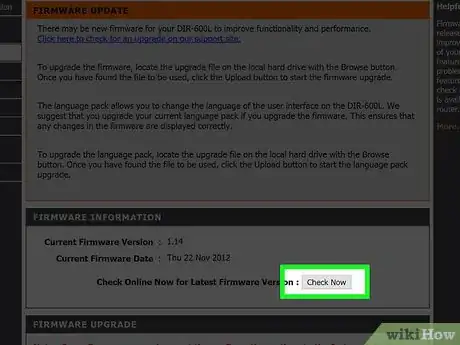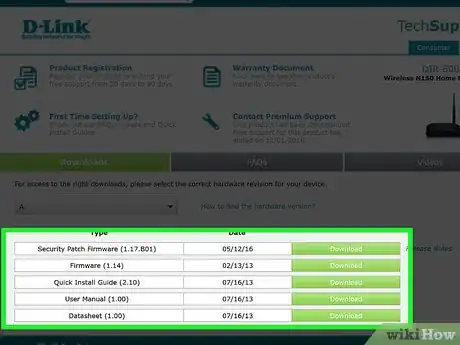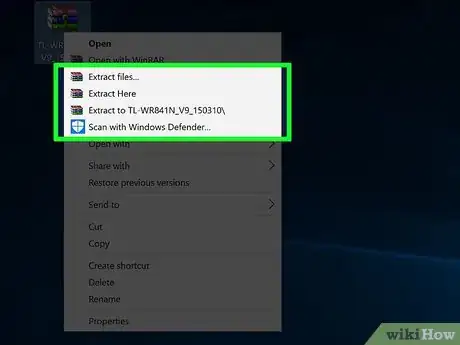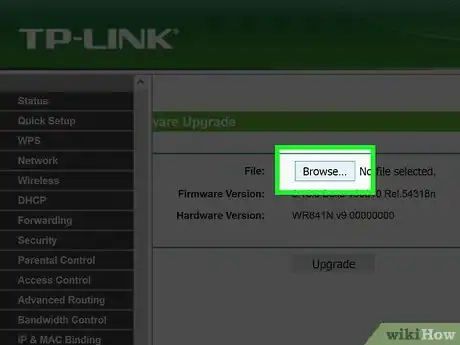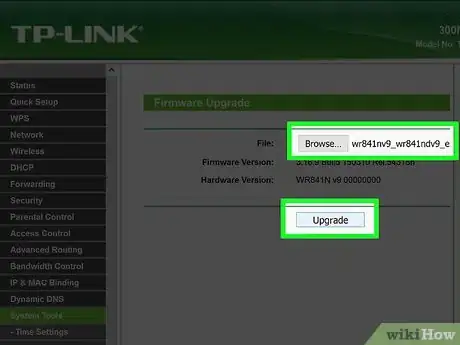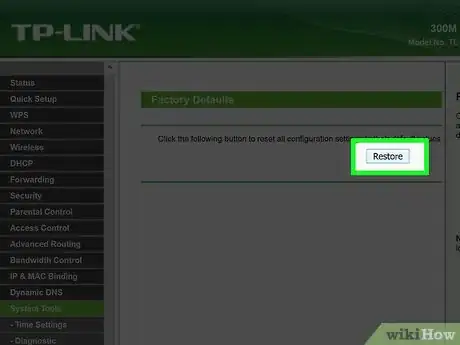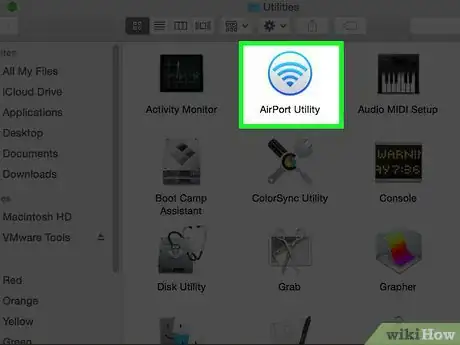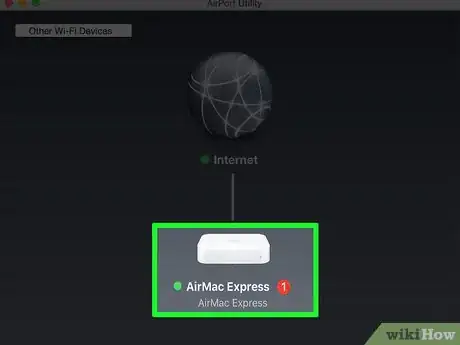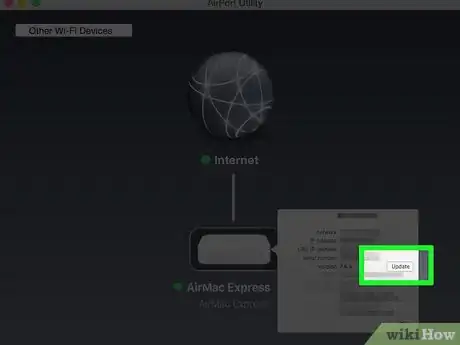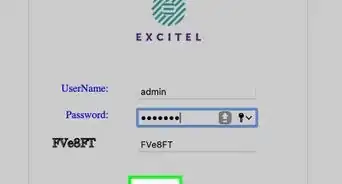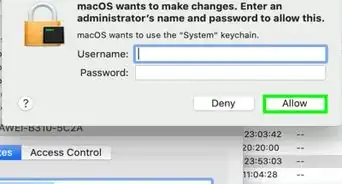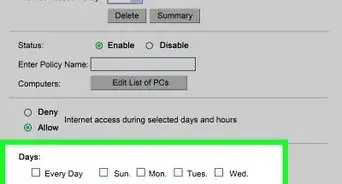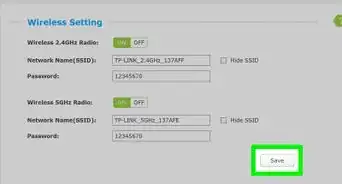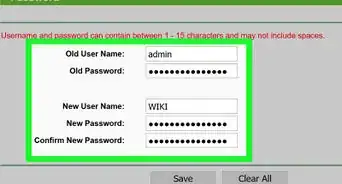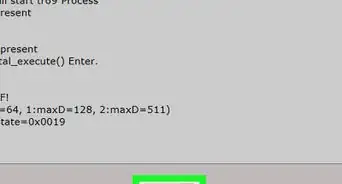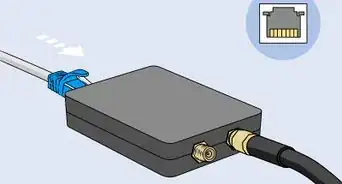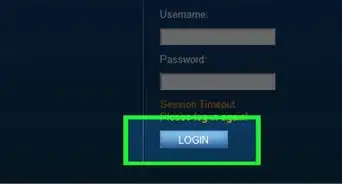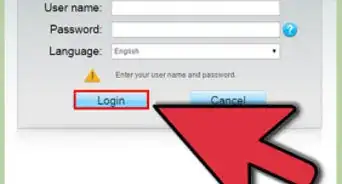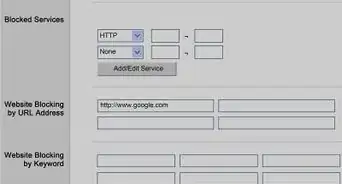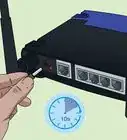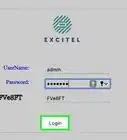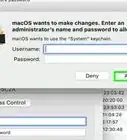This article was co-authored by Luigi Oppido. Luigi Oppido is the Owner and Operator of Pleasure Point Computers in Santa Cruz, California. Luigi has over 25 years of experience in general computer repair, data recovery, virus removal, and upgrades. He is also the host of the Computer Man Show! broadcasted on KSQD covering central California for over two years.
This article has been viewed 541,518 times.
Updating your router firmware can help improve connectivity and keep your router secure. It is always recommended to install the latest available updates to keep your network safe and efficient.[1] Most routers have a built-in update checker, which may or may not perform the entire process automatically. If you're using an Apple AirPort router, you can use the AirPort Utility program to check for updates.
Steps
Finding Your Router's Address (Windows)
-
1Check the physical router for the address. You can access your router by entering its IP address into your web browser.[2] Most routers have this IP address printed on the sticker affixed to the bottom. If your router does not, or you don't have access to the physical router, follow these instructions to find it.
- If you are using a Mac, skip down to the next section.
-
2Open the Start menu or screen and type "network status." This will open the "View network status and tasks" window.Advertisement
-
3Click the name of your current connection in the top-right corner. It will have an icon indicating the type of connection you are using (Wi-Fi, Ethernet, etc.).
- Make sure you're connected to the router's network.
-
4Click the "Details" button in the new window that appears. This will display a list of entries.
-
5Find the IPv4 Default Gateway entry. The IP address listed here is your router's IP address.[3] Make a note of it and skip down to the Installing Router Updates section below.
Finding Your Router's Address (Mac)
-
1Check your physical router for the IP address. You'll access your router's configuration page by entering its IP address into a web browser on your computer. Most routers have the IP address printed on a sticker on the bottom. If your router doesn't have this sticker, or you can't physically access the router, follow the instructions in this method.
- If you are using an Apple AirPort router, see the Updating an AirPort Router section below instead.
-
2Click the Apple menu and select "System Preferences." This will open a new System Preferences window.
-
3Click the "Network" button. This will display all of your network connections.
-
4Select your active connection in the left frame. It will have a green indicator next to it, and will say "Connected" underneath.
- Make sure you're connected to the router's network.
-
5Click the "Advanced" button. This will open a new window.
-
6Click the "TCP/IP" tab and look for the "Router" entry. This is the IP address for your router.
Installing Router Updates
-
1Connect to the router via Ethernet. Some routers are setup to not allow access to the configuration page if you are connected via Wi-Fi. Connecting via Ethernet will help ensure that you can properly access the configuration tools.
-
2Enter your router's IP address into a web browser's address bar. You can find this address by following the methods outlined above.
- Enter the address as if you were visiting a webpage.
-
3Enter your login information. When you try to open the configuration page, you'll be prompted to enter your router login information. If you don't have this information saved, you can try some of the common defaults:
- Try leaving both fields blank. Many routers don't have any username or password required.
- Try entering "admin" as the username, and then leave the password blank. If that doesn't work, enter "admin" as the password as well.
- Look up your router make and model at routerpasswords.com. This will display the default login information.
- If the default login information doesn't work, and you can't figure out how to log in, you can reset the router by pressing and holding the physical Reset button on the back. This will erase all of your router's settings, possibly disrupting your wireless network if you changed any default settings for it. You can then use the default login.
-
4Open the "Firmware," "Router Upgrade," or "Update" page. The name of this page will be different for every different router manufacturer. The location varies, but you can usually find it in the "Administration," "Utilities," or "Maintenance" section.
-
5Click the "Check" button to see if updates are available. Many routers have a button that will check to see if a new version of the router's firmware is available.
-
6Download the latest firmware files if presented with a link. Depending on the router, you may be provided a link to the latest firmware version, or the router may even be able to download it on its own.
-
7Visit the manufacturer's support site if no link is given. If there is a newer version of the firmware available, but no links are given, you'll need to download the firmware from the manufacturer. You can get these files from the Support sections of these sites.
- Perform a web search to find the support site. For example, searching for "Netgear support" will get you the netgear.com/support link.
-
8Enter your router's model into the support site's search. You can find your router model number at the top of the configuration page. Enter this model number into the search on the manufacturer's website.
-
9Find the latest firmware files. Depending on the router, there may be a single firmware files, many different ones, or none at all. Download the latest version, either by date or by number. The file will usually download in ZIP format.
- Make sure you don't download a version earlier than the one you're using. You can see what version you're using on your router's firmware update configuration page.
-
10Extract the ZIP file. After the firmware file has finished downloading, double-click the downloaded ZIP file to open it, then click "Extract" to extract the contents. This will usually give you one file with an unfamiliar extension.
-
11Upload the file to your router. Back in your router's firmware update page, click the "Choose File" button and navigate to your newly-extracted file. Select it and then click the "Upload" button in the router configuration page.
-
12Wait while the update is applied. Once the file is uploaded, the firmware update process will begin. You'll typically see a progress bar, and the update process may take 3-5 minutes. Your router will likely reset afterwards, which will disconnect you from the network for a few moments.
-
13Reset your router if the update fails. If the firmware update doesn't work, and you can no longer connect to the router, you can manually reset it and try again. Press and hold the Reset button on the back of the router for 30 seconds to reset it to factory defaults. You'll need to reconfigure your network if you made any changes to the default settings previously.
Updating an AirPort Router
-
1Open the AirPort Utility program in your Utilities folder. This program allows you to change your AirPort router's settings. You can find the Utilities folder in your Applications folder.
- If you're using an iOS device, you can download the AirPort Utility from the App Store.
- The AirPort Utility is only available on Mac OS X and iOS devices.
-
2Click your base station and enter your password. The base station icon may have a red badge number indicating that an update is available, but this may not appear until after you've entered your password.
-
3Click the "Update" button to download and install the update.[4] This button only appears if an update is available. Click "Continue" when prompted to confirm.
-
4Wait for the router to update. This may take several minutes to complete. You will be disconnected from the network for a short time during the update process.[5]
Expert Q&A
Did you know you can get expert answers for this article?
Unlock expert answers by supporting wikiHow
-
QuestionDo I need to update my router's firmware?
 Luigi OppidoLuigi Oppido is the Owner and Operator of Pleasure Point Computers in Santa Cruz, California. Luigi has over 25 years of experience in general computer repair, data recovery, virus removal, and upgrades. He is also the host of the Computer Man Show! broadcasted on KSQD covering central California for over two years.
Luigi OppidoLuigi Oppido is the Owner and Operator of Pleasure Point Computers in Santa Cruz, California. Luigi has over 25 years of experience in general computer repair, data recovery, virus removal, and upgrades. He is also the host of the Computer Man Show! broadcasted on KSQD covering central California for over two years.
Computer & Tech Specialist
-
QuestionDo I have to inform my internet service company?
 Joseph CosciaCommunity AnswerYou usually shouldn't have to, unless it's their router and something went wrong with the update.
Joseph CosciaCommunity AnswerYou usually shouldn't have to, unless it's their router and something went wrong with the update. -
QuestionHow do I update my WiFi?
 Allan CramerCommunity AnswerAccess your router settings by typing 192.168.1.1 or 192.168.1.0 into your web browser's address bar. Provided that you have the admin username/password to login to the router (usually on a sticker on the router, or typically the admin/password will work), there will most likely have a notification on the first screen letting you know that an update is available when you access the router.
Allan CramerCommunity AnswerAccess your router settings by typing 192.168.1.1 or 192.168.1.0 into your web browser's address bar. Provided that you have the admin username/password to login to the router (usually on a sticker on the router, or typically the admin/password will work), there will most likely have a notification on the first screen letting you know that an update is available when you access the router.
Warnings
- Having firmware that's not updated can make you susceptible to firewall attacks.[7]⧼thumbs_response⧽
References
- ↑ Luigi Oppido. Computer & Tech Specialist. Expert Interview. 13 November 2020.
- ↑ Luigi Oppido. Computer & Tech Specialist. Expert Interview. 13 November 2020.
- ↑ http://www.howtogeek.com/233952/how-to-find-your-routers-ip-address-on-any-computer-smartphone-or-tablet/
- ↑ Luigi Oppido. Computer & Tech Specialist. Expert Interview. 13 November 2020.
- ↑ https://support.apple.com/en-us/HT201519
- ↑ Luigi Oppido. Computer & Tech Specialist. Expert Interview. 13 November 2020.
- ↑ Luigi Oppido. Computer & Tech Specialist. Expert Interview. 13 November 2020.
About This Article
1. Connect to the router via Ethernet.
2. Go to the router's IP address into a web browser.
3. Log in as an admin.
4. Go to the Firmware or Update page.
5. Check for an update.
6. Download the latest firmware if prompted.
7. Extract the firmware file.
8. Upload the file to your router.


